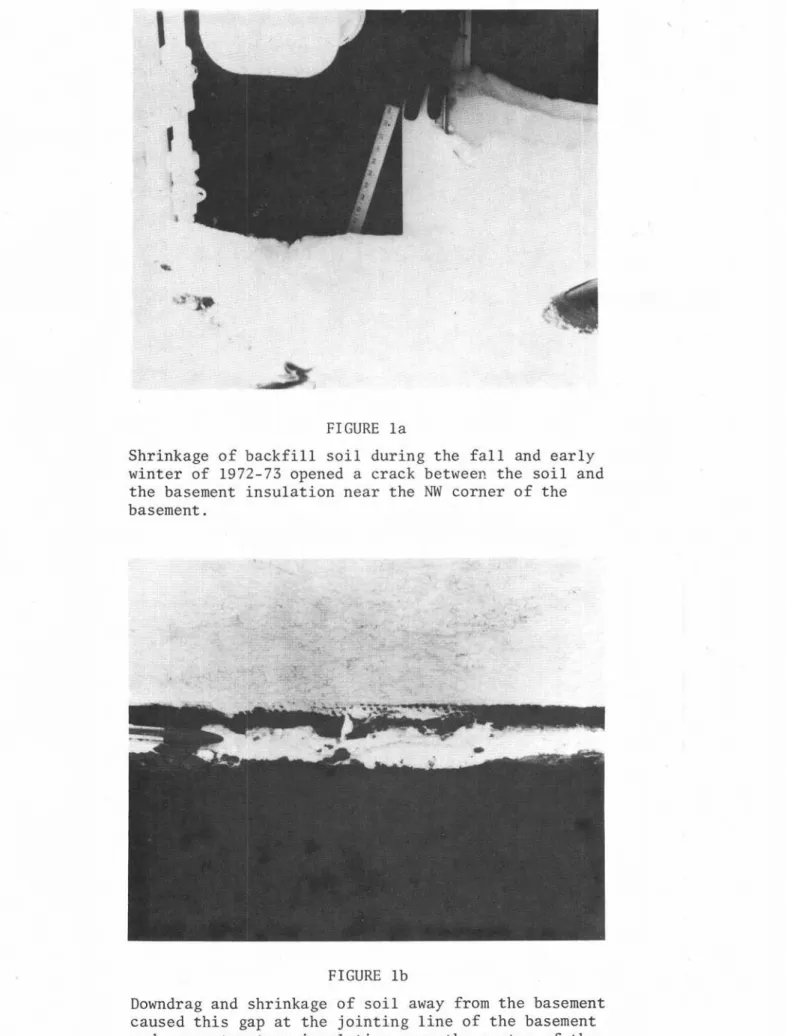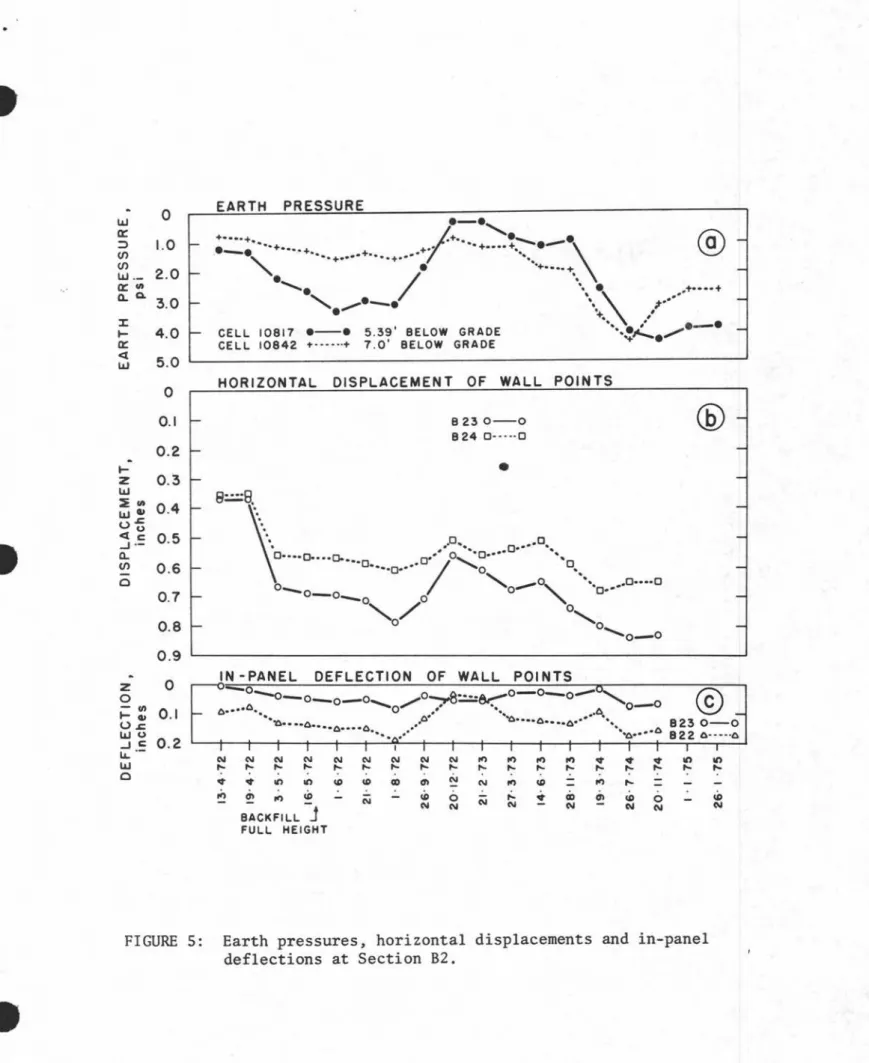Publisher’s version / Version de l'éditeur:
Technical Note (National Research Council of Canada. Division of Building Research), 1975-11-01
READ THESE TERMS AND CONDITIONS CAREFULLY BEFORE USING THIS WEBSITE. https://nrc-publications.canada.ca/eng/copyright
Vous avez des questions? Nous pouvons vous aider. Pour communiquer directement avec un auteur, consultez la
première page de la revue dans laquelle son article a été publié afin de trouver ses coordonnées. Si vous n’arrivez pas à les repérer, communiquez avec nous à PublicationsArchive-ArchivesPublications@nrc-cnrc.gc.ca.
Questions? Contact the NRC Publications Archive team at
PublicationsArchive-ArchivesPublications@nrc-cnrc.gc.ca. If you wish to email the authors directly, please see the first page of the publication for their contact information.
NRC Publications Archive
Archives des publications du CNRC
For the publisher’s version, please access the DOI link below./ Pour consulter la version de l’éditeur, utilisez le lien DOI ci-dessous.
https://doi.org/10.4224/20359054
Access and use of this website and the material on it are subject to the Terms and Conditions set forth at
Performance of the Mark IX Steel Basement to 31 January 1975
Tao, S. S.; Hamilton, J. J.
https://publications-cnrc.canada.ca/fra/droits
L’accès à ce site Web et l’utilisation de son contenu sont assujettis aux conditions présentées dans le site
LISEZ CES CONDITIONS ATTENTIVEMENT AVANT D’UTILISER CE SITE WEB.
NRC Publications Record / Notice d'Archives des publications de CNRC:
https://nrc-publications.canada.ca/eng/view/object/?id=eb513c84-a26f-40da-85bf-42ed7d2e9cbd https://publications-cnrc.canada.ca/fra/voir/objet/?id=eb513c84-a26f-40da-85bf-42ed7d2e9cbd
DIVISION OF BUILDING RESEARCH
'UVA..[.YZ£D
NATIONAL RESEARCH COUNCIL OF CANADA
.iJ
'fEClHIN ][CAlL
NOTJE
No.
595 PREPARED BY PREPARED FOR S.S. Tao and J.J. Hamilton General Distribution CHECKED BY G.O.H. APPROVED BY C. B.C. November 1975 SUBJECT
•
•
PERFORMANCE OF THE MARK IX STEEL BASEMENT TO 31 JANUARY 1975
The Mark IX house was constructed in the late winter of 1972 by the Regina Chapter of the Housing and Urban Development Association of Canada (HUDAC). The major innovation in this house was an all-steel basement, designed and constructed under the supervision of Dominion Foundries and Steel Company Limited (DOFASCO). As described in Technical Note 579 (1), the foundation walls were instrumented by the Prairie Regional Station, Division of Building Research (PRS-DBR), with earth pressure cells, ground movement gauges, wall movement pins and thermocouples. The results of measurements by PRS-DBR for the first year (ending 31 March 1973) were also included in the Technical Note 579.
Since then, the insulation system on part of the basement exterior has been rebuilt, and a new series of thermocouples has been added to record temperatures in the soil adjacent to the basement. This Note records the principle results observed at the Mark IX to 31 January 1975.
upgrading Basement Insulation
It was noticed early in the winter of 1972-73 that the. soil around the basement had shrunk away from the wall, forming a gap 3 in. wide and, at points, more than 3.5 ft deep. There was also a gap at the jointing line where the insulation of the basement met that of the superstructure. The gaps are shown in Figures la and lb. Because of these gaps, cold outside air was able to circulate in the corrugated spaces of the wall, severely undermining the effectiveness of the wall insulation system. As a temporary measure, in January 1973, the
•
•
•
3
-12 in. below adjacent finished ground level.
Heat loss from uninsulated basements is usually more than suf-ficient to keep the ground near the walls and below footings from freezing. Insulating the walls will greatly reduce the heat loss from the near- and above-grade portions of the wall. There is some concern about the pos-sible danger of continuing the insulation to full depth on the inside of the basement wall for fear that this may permit deeper frost penetration and possibly cause large forces on the wall due to lateral frost heaving.
Figure 2a shows that even at the end of a severely cold winter (in which the cumulative freezing index reached 4026 Fahrenheit degree-days), there was no frozen ground in proximity to the basement. The widely spread ground temperature isotherms also indicate that heat loss from the basement was much less than for the uninsulated concrete basement shown in Figure 3 (3). During extremely cold weather, when there was essentially no snow cover, such as experienced on 12 January 1975 (Figure 2b),the freezing front did penetrate into the ground at the basement wall contact. Figures 4,5 and 6 show a minor trend to reduction in lateral earth pressures during the period. Prairie clay soils typically shrink in the direction parallel to a freezing front, even when frost heaving takes place perpendicular to the front. Provided the freezing front re-mains essentially horizontal in its advance, basement walls should not be subjected to large additional horizontal forces due to frost action .
Wall Movements and Lateral Earth Pressures
As described in Technical Note 566 (4), the major displacement of the walls took place during backfilling operations. The backfill was placed in three stages: it reached above mid-height on the deep basement walls on 13 April 1973, was raised about another foot on 25 April, and then to final elevation on 17 May. The first lift of backfill, consisting of hard clay clods that ranged from small fragments to large clods a foot or more in longest dimension, was rolled into place by a bulldozer in a
single lift. The backfilling started in the northwest corner, adjacent to section Bl, and proceeded around the west and south walls. This caused displacements of the upper portions of the west wall averaging between 1/4 and 1/2 in., with one section of the wall showing displacements of 3/4 to 9/10 in. These displacements appear to have given the deepest portion of the basement a slight parallelogram configuration, trending in a south-easterly direction.
The correlation between the magnitude of measured earth pressures and deflections of the walls was best at section B2, where post-construc-tion disturbances have been minimal. Comparison of the earth pressure results ,in Figure 5a with in-panel deflections at sections B22 and B23 in Figure 5c shows the best correlations of the three sets of results pre-sented in Figures 4,5 and 6. This is as expected because section B2 is more uniformly flexible and less well restrained at the bottom than sec-tions Bl and Cl. For these two sections, peak earth pressures of 4.5 psi and 5.6 psi were reached at wall displacements of 0.55 in. and 0.39 in.,
•
•
•
5
-Summary
1. The thermal performance of the basement walls improved substan-tially after the insulation repairs and modifications. Temperatures of the soil adjacent to insulated and uninsulated basements verify that heat flow is considerably reduced when insulation is provided.
2. Vertical movement of the foundation is insignificant to date, and the structural basement floor continued to perform very satisfactorily.
3. As a side effect, the excavation and backfilling operation necessary for the insulation repairs induced new peak pressures against the wall after July 1974. These ranged from 69.5 pcf to 143 pcf, equi-valent fluid pressure. These pressures are considerably higher than
those commonly assumed for basement wall design in Regina. In some cases. they are more than twice as high.
4. Horizontal displacements and in-panel deflections of the base-ment walls continued to be within the acceptable range.
Acknowledgements
Calibration, installation and monitoring of the instrumentation at the Mark IX basement has been carried out by Messrs. L.J. Snodgrass, D. M. Guenter and J. Y. Makohon of the Prairie Regional Station, DBR, Saskatoon. The enthusiastic assistance provided by Mr. K. Sexton,
occupant of the Mark IX and member of the HUDAR Research Committee from its inception, is gratefully acknowledged. During construction and consistently since, Mr. Sexton has given many hours of his personal time to record ground temperatures, earth pressures and foundation drainage with monitoring devices installed in the basement by the Prairie Regional Station and to record in written and photographic form the numerous details that are so important in compiling a complete record of perfor-mance. Without his dedicated and vigorous contributions the assessment of the performance of the steel basement and other innovative aspects of the Mark IX house would be lacking much valuable detail which could not be obtained otherwise because of the restrictions which distance and available staff resources place on the capacity of P.R.S. to carry out more frequent observations.
•
•
FIGURE la
Shrinkage of backfill soil during the fall and early winter of 1972-73 opened a crack between the soil and the basement insulation near the NW corner of the basement.
•
FIGURE lbDowndrag and shrinkage of soil away from the basement caused this gap at the jointing line of the basement and superstructure insulation near the centre of the
•
•
, ,-SNOW
COVER
,-"
セセセMMMMMMMMMMセセセG
o
2 FEET3
4 J•
FIGURE 3: Ground temperature isotherms for an uninsu1ated concretebasement on March 13, 1956 (after Solvason and Handegord 1959 (3).•
-
@-
C&)-•
B 2 3 0 - 0 B24 0···0_ 8:':'::8\.
- .', ••.0,... ..0..•. 0., 0 •••• 0- ••• 0-... 0" 0 ... 0" ' . - 0···.0.··· / ' 0 o. o "...-0" .... ..0....0
_ - 0 - 0 0 0'· - 0 0 " ' - / 0 ... o ' 0 ...0_0 EARTH PRESSUREHORIZONTAL DISPLACEMENT OF WALL POINTS
.-.,
+....+
/+.
...
- . -•....+....+
+.' . ...•....•. .- \
-'
".
....•....•....+/...
...•....•..
"'-... ... Nセ ••+•••• + - , ...- . .. 1'••, -• '+ '- CELL 10817 . - - . 5.39' BELOW GRADE ••••••
セNONMN
-CELL 10842 + .•••..+ 7.0' BELOW GRADE '+
0.8 -0.1 0.3 -0.4 0.5 0.6 0.7 0.2 -4.0 5.0
o
o
1.0 2.0 3.0 -セ z w セciエ w .. ッセ u Clc ...J'-n. (f) o w a:: :::> (f) (f) W._ a:: CIt n.Q.•
0.9 • III III セ セ セ BACKFILL-J
FULL HEIGHT z 0 o - C I t セ .. 0.1 oセ wu ...J c 0.2 LI. .-W oIN -PANEL DEFLECTION OF WALL POINTS
v_o セNNNN
©
- 0 -0 _ 0_ 0 ,...0-.,.8:.:.:.:&-0-0_0-"" C _ o••••0.. ...0 ,.' ". 0 0 - 0 "'n" " 0 . ,.0' .'0•••• 0 •••• 0 ••••• ". B 23 0 0 -· -· . 0•••• 0 •••• "'... ··.0••• ·0 B220 " " ' 0 I I I I I I I I I I I I I セ セ セ セ セ セ セ セ セ セ セ セ セ セ . セ . セ. セ セ セ セ セ セ N セ セ セ セ=
N セ 0 セN セ セ セ 0 N N N N N N N•
FIGURE 5: Earth pressures, horizontal displacements and in-panel deflections at Section 82.
•
VERTICAL MOVEMENT. INCHES

